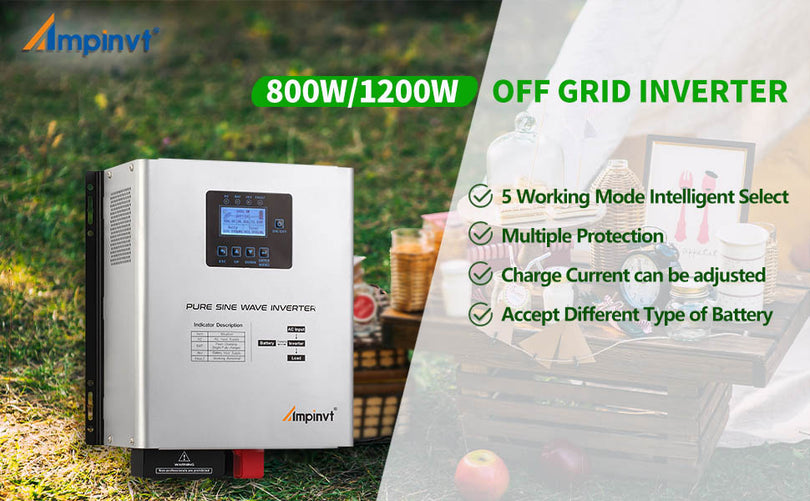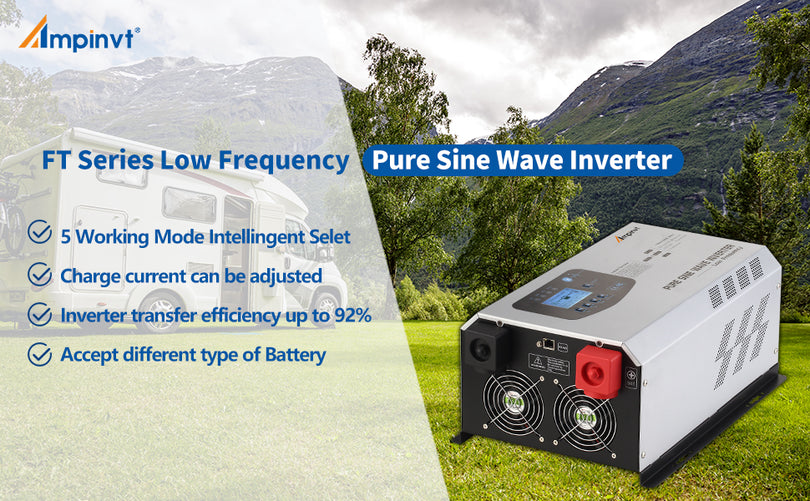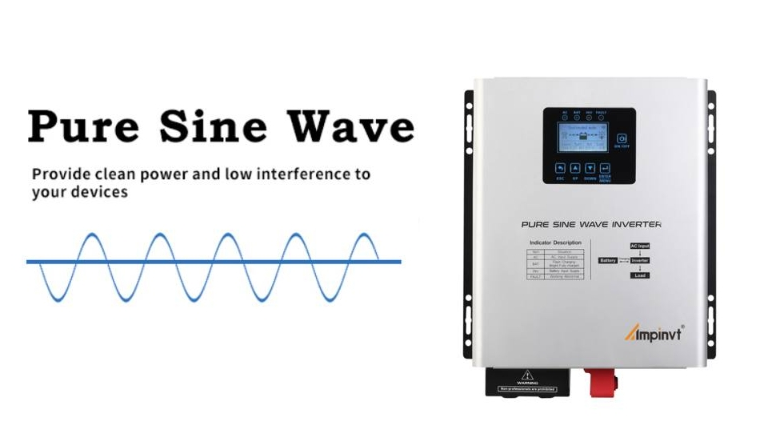- When the battery is low, the charge controller delivers lots of energy for a quick charge
- When the battery is close to full, it slows the charger by regulating its voltage and current.
- When the battery is full, it sends only a trickle of power to keep a full charge.
Stage 1: Bulk Charge
At this stage, the battery bank is low, and its voltage is lower than the absorption voltage set-point. So, the solar charge controller will send as much available solar energy as possible to the battery bank for recharging.
Stage 2: Absorption Charge
When its voltage reaches the absorption voltage set-point, the output voltage of the solar charge controller will keep a relatively constant value. Steady voltage input prevents a battery bank from over-heating and excessive gassing. Commonly, the battery bank could be fully charged at this stage.
Stage 3: Float charge
As we know, the battery bank is fully charged at the absorption stage, and a fully charged battery cannot convert solar energy into chemical energy anymore. Further power from the charge controller will only be turned into heating and gassing, as it is overcharging.

Trickle from tap
The float stage is designed to prevent the battery bank from long-term overcharging. At this stage, the charge controller will reduce the charging voltage and deliver a very small amount of power, like trickles, so as to maintain the battery bank and preclude further heating and gassing
Stage 4: Equalization charge
The equalize charge uses a higher voltage than that of absorption charging, so as to level all the cells in a battery bank. As we know, batteries in series or/and parallels constitute a battery bank. If some cells in the battery bank are not fully recharged, this stage will make them all fully recharged and complete all the battery chemical reactions.

Boiling water
Since it follows stage 3 (when the battery bank is fully recharged), when we raise the voltage and send more power to the batteries, the electrolytes will look like they are boiling. In actuality, it is not hot; it is hydrogen generated from the electrolytes, producing a lot of bubbles. These bubbles stir the electrolytes.
Stirring the electrolytes regularly in this way is essential to a flooded battery bank.
We can consider it a periodic overcharge, but it is beneficial (sometimes essential) to certain batteries, such as flooded batteries and not sealed batteries, like AGM and Gel.
Commonly you could find in battery specifications how long the equalization charge should last, and then set the parameter in the charge controller accordingly.



